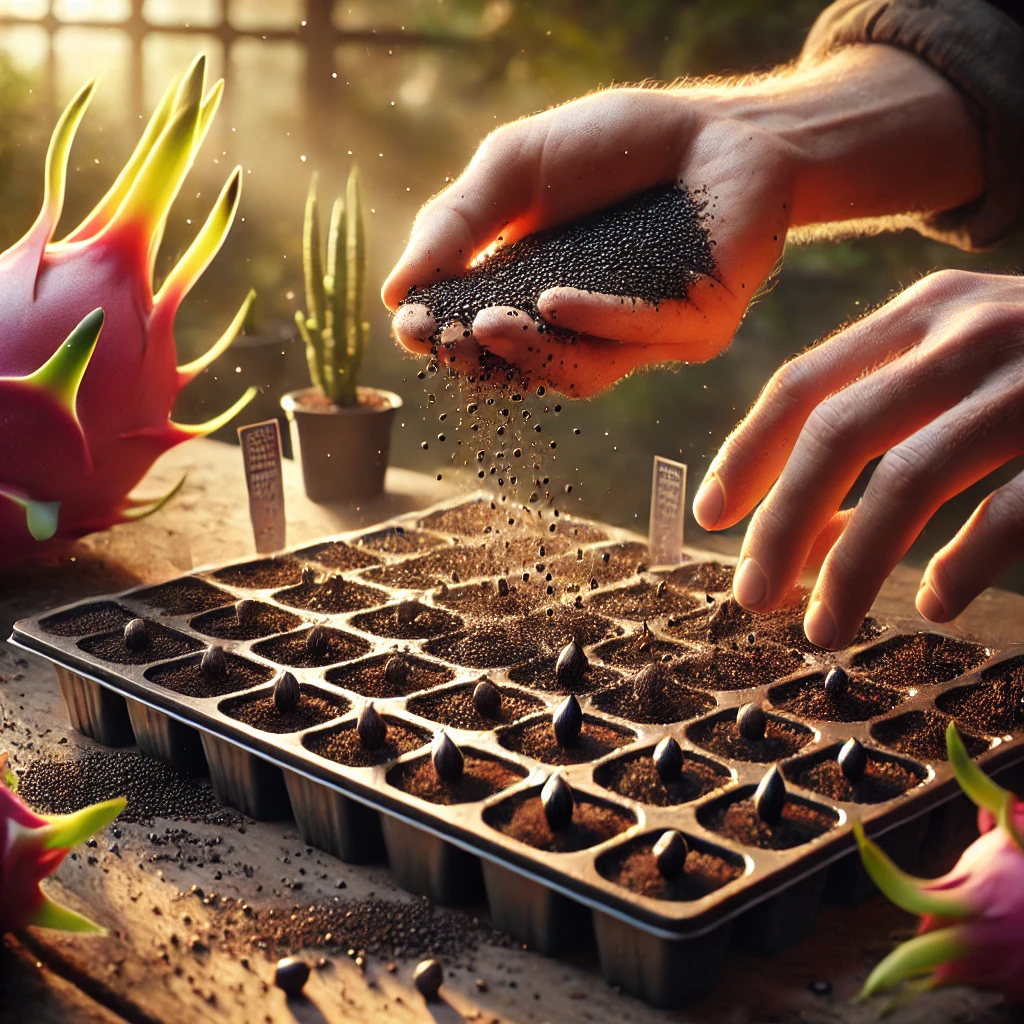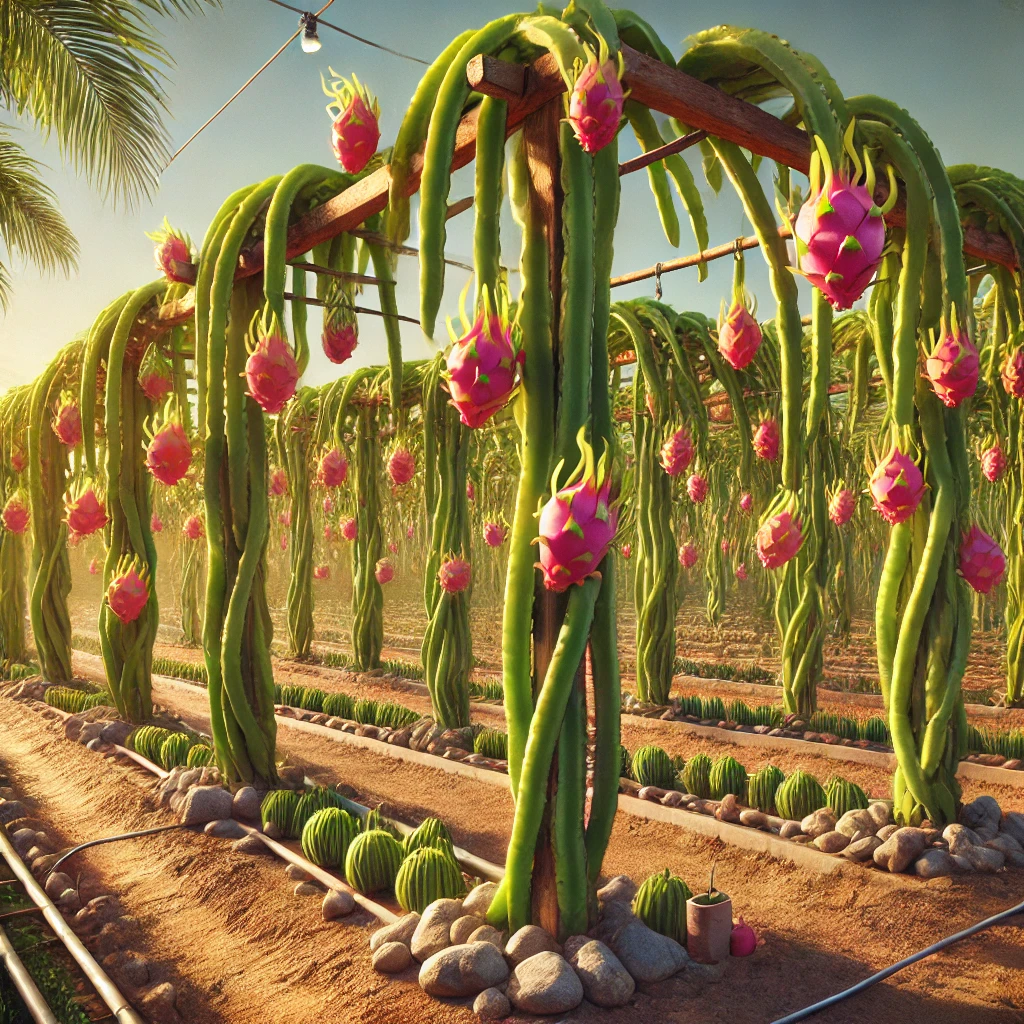Dragon Fruit Propagation: How to Grow from Seeds vs. Cuttings
Dragon fruit, also known as pitaya, is a stunning tropical fruit that can be grown from both seeds and cuttings. If you’re looking to cultivate your own dragon fruit plant, understanding the differences between these propagation methods will help you choose the best approach for your garden. In this guide, we’ll explore how to grow dragon fruit from seeds vs. cuttings, along with the pros and cons of each method, ensuring you achieve a thriving and fruitful plant.
Growing Dragon Fruit from Seeds
1. How to Start Dragon Fruit from Seeds
Growing dragon fruit from seeds requires patience, as the process can take several years before the plant starts producing fruit. Here’s how you can get started:
Materials Needed:
- Fresh dragon fruit
- A knife and spoon
- Paper towel or strainer
- Small pots or seed trays
- Well-draining potting mix
- Spray bottle for watering
Steps to Grow from Seeds:
- Extract the Seeds: Cut open a fresh dragon fruit and scoop out the seeds.
- Rinse and Dry: Rinse the seeds under running water to remove the pulp. Let them dry on a paper towel for a day.
- Prepare Soil: Fill small pots or seed trays with a well-draining potting mix, ideally a cactus or succulent soil blend.
- Plant the Seeds: Sprinkle the seeds on top of the soil and lightly cover them with a thin layer of soil.
- Water Gently: Use a spray bottle to mist the soil and keep it moist but not waterlogged.
- Provide Warmth and Light: Place the pot in a warm location with indirect sunlight.
- Germination Period: Seeds typically germinate in 1 to 4 weeks. Once they develop small seedlings, they can be transplanted into larger pots or garden beds.
2. Pros and Cons of Growing from Seeds
Pros:
- Cost-effective and easy to source seeds.
- A rewarding process for patient gardeners.
- Can grow a variety of dragon fruit types.
Cons:
- Takes several years (3-5 years) before fruit production begins.
- Higher risk of genetic variation, meaning fruit quality may differ.
- Seedlings require more care in early stages.
Growing Dragon Fruit from Cuttings
1. How to Start Dragon Fruit from Cuttings
Propagating dragon fruit from cuttings is the fastest and most effective way to grow a productive plant. Here’s how you can do it:
Materials Needed:
- Healthy dragon fruit stem cuttings (12-18 inches long)
- Sharp knife or pruning shears
- Rooting hormone (optional)
- Well-draining potting mix
- Pots or garden bed
Steps to Grow from Cuttings:
- Choose a Healthy Cutting: Select a mature, healthy stem from an existing dragon fruit plant.
- Let it Callous: Allow the cut end of the cutting to dry for 2-5 days in a shaded area. This prevents rot.
- Prepare the Soil: Use a well-draining cactus mix in a pot or a garden bed.
- Plant the Cutting: Insert the calloused end of the cutting about 2-3 inches deep into the soil.
- Water Sparingly: Lightly water the soil and let it dry out between watering sessions to prevent root rot.
- Provide Support: As dragon fruit is a climbing cactus, set up a trellis or support system.
- Root Development: Within 2-4 weeks, roots will begin to form, and new growth will appear.
2. Pros and Cons of Growing from Cuttings
Pros:
- Faster growth and fruit production (1-2 years instead of 3-5).
- More genetically identical to the parent plant, ensuring quality fruit.
- Higher survival rate compared to seeds.
Cons:
- Requires access to a mature dragon fruit plant for cuttings.
- Risk of disease if using an unhealthy cutting.
Which Method is Best for You?
| Factor | Growing from Seeds | Growing from Cuttings |
|---|---|---|
| Time to fruit | 3-5 years | 1-2 years |
| Ease of propagation | Easy, but slow | Fast and effective |
| Genetic consistency | Variable | Identical to parent plant |
| Space needed | Small pots initially | Requires more space for vine growth |
| Success rate | Moderate | High |
If you’re looking for a fast and reliable method, growing from cuttings is the best option. However, if you enjoy experimenting and don’t mind waiting, starting from seeds can be a fun project.
Final Thoughts: The Best Way to Propagate Dragon Fruit
Both seeds and cuttings have their own advantages when propagating dragon fruit. While cuttings provide faster results, seeds offer a wider genetic variety and can be a fulfilling challenge for gardeners. Whichever method you choose, ensure your dragon fruit plants receive warm temperatures, well-draining soil, and proper support to thrive.
Are you growing dragon fruit from seeds or cuttings? Let us know in the comments below! Don’t forget to subscribe for more gardening tips, propagation guides, and plant care tutorials!



